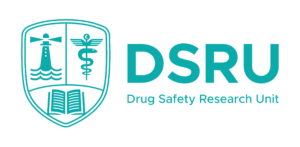The Importance of Pharmacovigilance, Risk Management and Benefit-Risk Evaluation
Posted on: Monday 24 February 2025
Author: Drug Safety Research Unit
Introduction: Calling all PMST Trainees and Educational Supervisors
The Drug Safety Research Unit (DSRU) has been working in the field of Pharmacovigilance for several decades and has worked with FPM to support Pharmaceutical Medicine Specialty Training (PMST) for many years.
In the PMST curriculum, Capabilities in Practice (CiPs) 6 and 7 cover Pharmacovigilance, Risk Management and Benefit-Risk Evaluation:
CiP 6: Engages in pharmacovigilance and risk-management systems to ensure patient safety and risk-minimisation.
CiP 7: Provides up to date evaluations of the benefits and risks of medical products.
Understanding the Importance of Pharmacovigilance, Risk Management and Benefit Risk Evaluation
It may be that you don’t get much exposure to pharmacovigilance, risk management or benefit risk evaluation in your current role. We explain here why it’s important that all pharmaceutical physicians have knowledge of these areas.
Benefit risk assessment permeates through many areas of pharmaceutical medicine; benefit risk decisions are made at the non-clinical stage of development and continue throughout the clinical development programme. The amount and type of available data to feed into the benefit risk assessment changes over time, with greater availability of safety data early in clinical development and an increasing amount of efficacy and patient safety data in later studies. The way that benefit risk assessments are conducted is likely to change throughout this period and may ultimately be based on a large amount of complex data. Understanding aggregate data and interpreting this in a meaningful way feeds into this assessment. Training in pharmacoepidemiological methods should provide PMST candidates with the ability to interpret statistical results, understand different study designs, conduct meta-analysis as well as address bias and confounding.
For CiP 6, there is the need to be able to “identify and manage risks to guide appropriate use of a medical product”, “communicate new safety findings effectively and recommend appropriate risk management strategies and risk minimisation activities” and “locate safety information associated with a medical product and provide advice on its safe and effective use”. A solid foundation in pharmacovigilance and its regulations, including an understanding of periodic reporting, signal detection, risk management plans and additional risk minimisation measures, would satisfy this requirement.
For some time, the DSRU has worked with FPM to deliver training in Pharmacovigilance, Risk Management and Benefit-Risk Evaluation for PMST.
The DSRU highly values the long relationship it has enjoyed with PMST trainees over the years and would very much like to continue to provide support. They are also open to any new ideas and suggestions for new educational initiatives, so please do not hesitate to get in touch!






